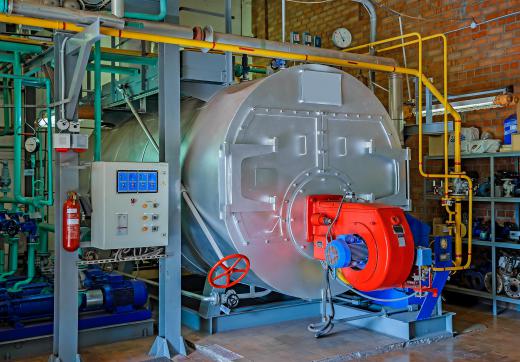What is Latent Heat?
Latent heat is the name given to energy which is either lost or gained by a substance when it changes state, for example from gas to liquid. It is measured as an amount of energy, joules, rather than as a temperature.
Most substances can exist in three states: gas, liquid and solid, though there is an additional state named plasma. The main difference between a substance in each state is how quickly its molecules are moving. As a liquid, the molecules move at a speed where they can repeatedly join together, break apart, then join together again. When they move slowly, they stay joined together, forming a solid. When they move quickly, they stay broken apart, forming a gas.

For example, we usually think of water as a liquid. However, it can also be a solid (ice) or a gas (steam). But as you can see when you boil water in a kettle or when the surface of a pond freezes, not all of the molecules in a substance change state at the same time.
When a molecule changes state, it has a different amount of energy. However, the laws of physics state that energy can’t just disappear. So when the molecule moves more slowly, the excess energy is released into the surroundings as latent heat. When the molecule moves more quickly, it has absorbed extra energy by taking latent heat from the surroundings.

You can feel the effects of latent heat on a hot day when sweat evaporates from your skin and you feel cooler. This is because the molecules of liquid which evaporate will need more energy when they become water vapor. This heat energy is taken from your skin, reducing its temperature.
The effects of latent heat are also visible in weather. When water molecules in the air rise up high enough, they become colder and condense into liquid which has less energy. The "spare" energy becomes latent heat and makes the surrounding air warmer. This leads to wind and, when the process happens quickly, can even cause a thunderstorm.
Latent heat also provides the power for hurricanes and cyclones, which begin over warm oceans where there is a large supply of warm and humid air which can rise and then condense. The warmer the air, the more energy results from it cooling and condensing, which is why hurricanes are more likely and more powerful in warmer seasons.
AS FEATURED ON:
AS FEATURED ON:












Discussion Comments
I never realized the changes in weather during the summer were because of latent heat, but it makes a lot of sense. The point about all molecules not changing state at the same time makes a lot of sense too – I’ve noticed when I make ice, some of the water is still in liquid form inside the ice cubes. I never realized it was because not all the molecules in the water had slowed down enough to form a solid. I don’t think I’ll ever look at ice or weather the same again.
Post your comments